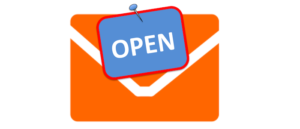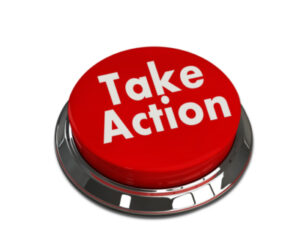Learning how to write catchy headlines is one of the essential copywriting skills every good marketer needs to learn.
The most important part of any ad or sales page is the headline. Advertising legend David Ogilvy said:
“on the average, five times as many people read the headlines than read the body copy”
A good headline grabs your prospect’s attention and lures them further into your copy. A well-crafted attention-grabbing headline can be the difference between your ad campaign being wildly successful, or a complete and utter dud.
In this post, I’ll share some great tips that’ll help you generate effective high converting headlines for your ad campaigns and sales pages, in no time flat.
What is a headline?
In advertising a headline is the first line of text at the top of an ad or sales letter. It’s the heading of your sales copy, under which the rest of your copy lies.
Your headline has two main purposes:
- Grab your prospect’s attention
- Make your prospects keep reading (or watching if you’re using video sales letters)
Headlines should grab your prospect’s attention and get them to stop whatever they are doing, and get them to start reading or watching the rest of your ad.
If you have a great product you need to tell people about it. You won’t sell anything if you can’t tell people about your product – and you can’t tell people about your product if you can’t get them to read or watch your ad.
Imagine you create the best-looking ad and spend ages writing the sales copy…..but nobody reads it. You won’t sell anything if you can’t tell people about your product – and you can’t tell people about your product if you can’t get them to read or watch your ad. That’s why having good headlines is so important.
In order to get people to read your ad or sales copy you have to grab their attention and hold it long enough so that they keep reading. Good headlines are the key to doing that. You need to write killer headlines that stand out and grab your prospect’s attention, and lure them further into your copy.
Joe Sugarman, who wrote the excellent book – The Adweek Copywriting Handbook, said:
“the purpose of a headline is to get your attention and draw you to the sub-headline”
A good headline makes your reader want to read the rest of your ad. The best headlines have an almost magnetic effect on readers which pulls them into the rest of the ad copy.
When you learn how to write headlines that grab attention and make your prospect want to read or view the rest of your ad, you’ll start to see more success from your marketing campaigns.
What are the elements of an effective headline?
In order to be effective a headline should adhere to these principles:
It should target your ideal audience
You don’t want to waste time advertising to people that aren’t in your target market. This is especially true if you’re advertising online and paying for each and every click. You want to make sure your ads are attracting the right clicks. A good advertising headline targets the people you want to click on your ad and filters out the people you don’t.
When someone reads the headline for your ad they should be able to immediately tell if it is relevant to them or not. If it is relevant, they will keep reading your ad or sales copy. If it isn’t they won’t. Focus on your target audience or ideal prospect when writing your headline.
Your headline should talk directly to them. When you write a headline with your prospect in mind, your headline will be more targeted and relevant to them.
It should connect with them on an emotional level
Your headline should connect with your prospects on an emotional level. To grab and hold their attention, your headline should appeal to their emotions.
How do you achieve this? You trigger their emotions by appealing to something they want to achieve, or something they want to avoid. In other words, you focus on something they desire or something they fear.
Example:
- “Do you want to earn more money, work from home, and be your own boss?”
- “Do you hate taking orders from your boss, and worry you’ll be stuck in the rat race forever?”
Both headlines are targeting the prospect’s emotions. Headline 1 is focusing on something the prospect desires (financial freedom, being their own boss). Headline 2 focuses on something the prospect fears and wants to avoid (working for someone else, being stuck in the 9-5 lifestyle).
They are both advertising the same thing, but notice how the use of words is different in each example. People are motivated by different things. People are also motivated in different ways.
In NLP we learn that there are “Towards” orientated people & “Away” orientated people.
- Towards people are motivated by moving towards something – e.g. achieving success.
- Away people are motivated by moving away from something e.g. avoiding failure.
You can tell what type someone is by paying attention to the language they use.
You can communicate the same objective to both types of people by changing the language you use in your headlines.
Example:
- “Do you want to earn more money, work from home, and be your own your boss?”
- “Do you hate taking orders from your boss, and worry you’ll be stuck in the rat race forever?”
The 1st headline uses “towards” language (move towards being your own boss and earning more money). The 2nd headline uses “away from” language – Move away from the 9-5 lifestyle, move away from working for someone else.
When writing headlines that appeal to your prospect’s emotions you should write different headlines to target both “towards” and “away” people for maximum ad effectiveness.
Your headline should contain your biggest benefit
Benefits are what your prospects are seeking when they buy your product or service. Your product is just a means to an end – and that end is the benefit that it delivers. People often confuse features and benefits, but they are not the same.
- Features are the attributes or qualities of your product or service.
- Benefits are what your product or service does for your customer. They are the results or regards your customer gets when they use your product.
Check out my post on Features vs Benefits for a more in-depth look at the fundamental differences between the two. Your prospect is ultimately interested in how they will benefit from using your product or service.
How will it improve their life? What result will it give them? Your headline should contain the biggest benefit that your product delivers them. This will make your headline super relevant and grab their attention long enough to entice them to keep reading the rest of your ad or sales copy.
Example:
“How to lose 100 pounds in 30 days without dieting or killing yourself with exercise”
Here the benefit is clear – your prospect will learn how to lose 100 pounds in 30 days without having to exercise hard or give up their favourite foods.
When you make your headlines benefit-focused you will appeal to your prospects’ desire to achieve that benefit, and they will more easily be drawn to read the rest of your ad.
4 qualities you can incorporate into your headlines
Advertising guru John Caples says that there are 4 qualities that headlines may contain.
1. Self-interest
Self-interest headlines are all about your prospect and the benefit they are after e.g. weight loss, more money, whiter teeth.
2. News
News based headlines appeal to our natural tendency to seek news or information.
3. Curiosity
Curiosity-based headlines will arouse your prospect’s curiosity and make them want to read more to satisfy their curiosity.
4. Quick easy way
Headlines that incorporate the quick, easy-way element attract readers who want results fast without having to work hard for them Your headlines can incorporate one or all four of these qualities.
Example:
Let’s analyse the headline example we used earlier and see how these qualities are used:
“How to lose 14 pounds in 30 days without dieting or killing yourself with exercise”.
This headline incorporates (1) Self-Interest, (3) Curiosity, and (4) Quick, Easy-Way.
Now let’s change the headline slightly to incorporate (2) the News element:
“Scientific breakthrough! Latest weight loss study reveals how to lose 14 pounds in 30 days, without dieting or killing yourself with exercise”.
So now you know the various elements and qualities your headlines should contain, let’s have a look at how to write attention-grabbing headlines.
How to write attention-grabbing headlines
Using what you have learnt so far you have the elements you need to write great attention-grabbing headlines.
OK, so far we know that headlines should:
- Be relevant to your target audience
- Appeal to prospects on an emotional level
- Contain your biggest benefit
We also learnt that your headlines can contain any of the 4 qualities:
- Self-Interest
- News
- Curiosity
- Quick, easy-way
Now I’m going to share some psychologically effective headline openers that’ll make the process of writing effective headlines much easier.
Psychologically effective headline openers
These types of headline openers have been used by countless marketers and have proven to be effective in a variety of different industries.
“How”
Example: “How to lose weight, feel great, and feel happier in 3 easy steps”
“Free”
Example: “Free report reveals how to make serious money selling unwanted goods on eBay”
“New”
Example: “New video reveals the trick to making old carpet look like new using these everyday household items”
“Warning”
Example: “Warning! Your bank may have been overcharging you without you knowing”
“Do you”
Example: “Do you know the secret to appearing more attractive to the opposite sex and getting more dates?”
“Now”
Example: “Now you can get on the property ladder with no money down, even if you have no experience or knowledge of the property market before”
“Amazing”
Example: “Amazing new ointment stops arthritis pain in seconds”
Get writing and test, test, test!
Now you know the importance of having an effective attention-grabbing headline. We covered what elements a good ad headline should contain, and you have some tried and tested openers to help you get started.
You now need to get started writing your own. The best copywriters spend a great deal of time writing and re-writing their headlines. They understand the importance of getting the headline right.
You should write at least 15 different headlines for each ad. If you can write more write more – the more the better! Let your creativity flow, get your thoughts down on paper.
Then go through your headlines and pick the best ten. If that sounds like too many then pick your best five – the idea is to have more than one headline written. If there’s one thing I’ve learnt from being in marketing it’s this – never assume you know what the market or your prospects will respond to. That applies to your headlines also. You need to test everything and let them decide!
Once you have your best headlines you need to test them against each other.
A/B split-testing your headlines is a quick way to determine which ones your prospects are responding to and which ones need to be scrapped. Keep testing until you have a clear and statistically significant winning headline.
Once you have a winner don’t stop there! Test the winning headline against another. You’ll be amazed at how much you can continue to improve your engagement, click-through-rate, and conversions/sales by constantly tweaking and testing your headlines.
As someone who has written and tested hundreds, if not thousands, of ads I can honestly say that testing and tweaking headlines has been the biggest factor in increasing the performance of my ads, even whilst keeping everything else (product price, offers etc) the same.
A winning headline can take a mediocre-performing advert or sales letter and turn it into a high-performing, cash-generating machine. Remember to have fun when writing and testing your headlines! The more headlines you write, the better you’ll get at it. The more testing you do the more you’ll know which headlines work best with which audience.
When you know what works best for your target audience you’ll be able to churn out winning headlines in no time flat.
If you want to make quantum leaps in your copywriting ability check out my review on some of the best copywriting books that all marketers should read and own.




